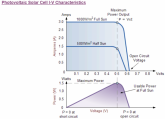I don't have experience with electrodacus but it does intrigue me.
* what kind of voltage can it handle coming off the PV array? Does it force relatively low voltage high current coming from the roof to the rest of the system?
* Where do the DSSR20 modules get installed? At the panels or with the rest of the system?
I'm not positive but I believe so (maybe I'm showing my ignorance of PWM here, but isn't this the way PWM works?).
With the caveat that I know almost nothing about the DSSR20 or PWM, and that I also would like to hear more about how these units are meant to be installed/used, I have some guesses.
From the schematic and the spec sheets (post 3 of this thread or pg 3 and 4 of the manual), it looks like:
- each DSSR20 is optimized for 2 x 60 cell panels in parallel. (max 49V @ 20A).
- DSSR20's are meant to be connected in parallel up to 30 units
- The schematic makes it look like they get installed near the panels but this may not be accurate (but they don't look weatherproof so I suspect they aren't meant to be installed outside)
Last edited:



